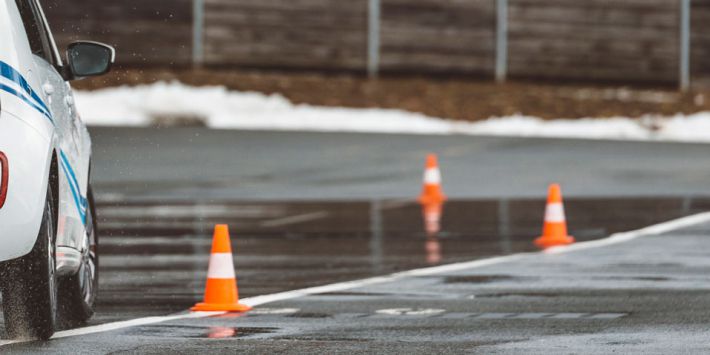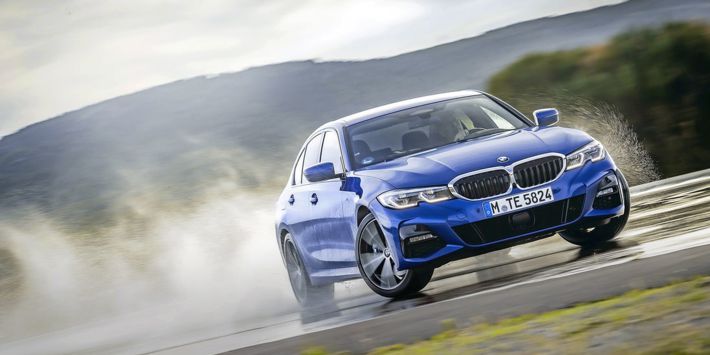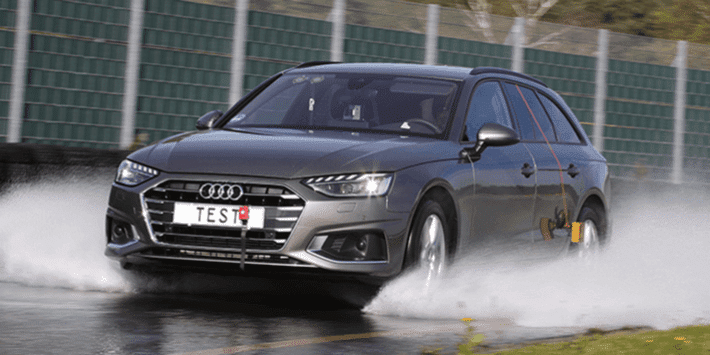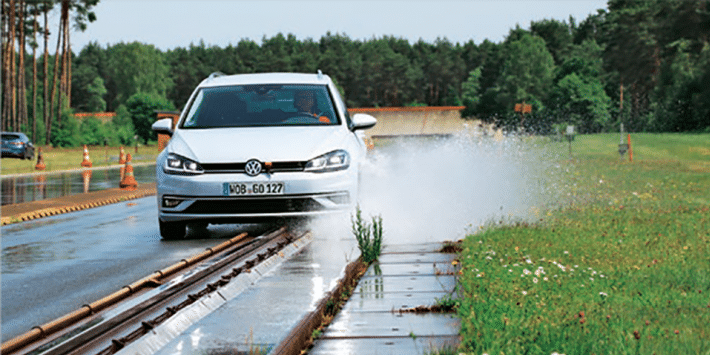AutoBild has compared 6 all season tyres, 2 all-terrain tyres, 1 summer tyre and 1 winter tyre to demonstrate the winter capabilities of all season tyres.
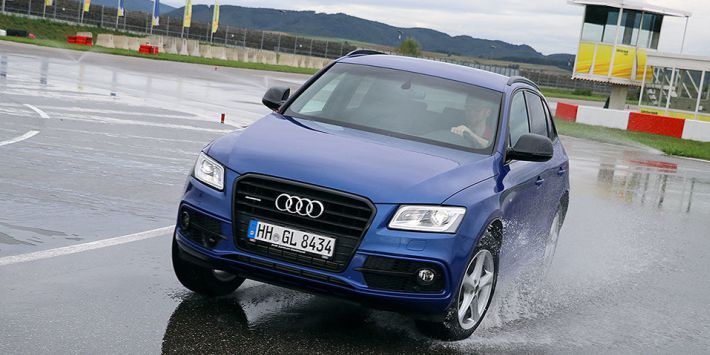
A wide variety of tyres tested
In its latest issue, AutoBild AllRad (special 4×4 edition) has asked what makes a real winter tyre. Generally speaking, a tyre is considered a winter tyre if it has the M+S and 3PMSF markings. The problem is that many all season tyres or even all-terrain tyres have these markings without really being winter tyres. Hence, why the German magazine decided to test 6 all season tyres and compare their performance with that of a winter tyre and a summer tyre in winter conditions. The following all season tyres (size 235/50 R18) were put through this test:
- Goodyear Vector 4Seasons SUV Gen-2
- Hankook Kinergy 4S
- Mastersteel All Weather
- Michelin CrossClimate SUV
- Nokian Weatherproof SUV
- Vredestein Quatrac 5
The magazine also added 2 mixed tyres with an all-terrain tread and the M+S and 3PMSF markings:
Tests in winter and“normal” conditions
To conduct its tests, AutoBild used various test centres. Using an Audi Q5, the magazine conducted a total of 12 tests on 3 different surfaces:
On snow: traction, braking, handling and slalom
On wet roads: aquaplaning, handling, cornering and braking
On dry roads: handling, braking, noise and rolling resistance
Mixed tyres don’t measure up
As expected, the Yokohama Geolandar A/T G015 and General Tire Grabber AT3 did not hold up against the all season tyres and even less so when pitted against the winter tyres.
In traction, slalom and handling on snow, the General tyre obtained the second poorest results after the summer tyre. If the braking distance from 50 km/h on snow was fair (27.6 m), the braking distance on wet roads would make your hair stand on end: 68.7 m to bring the vehicle to a complete standstill from 100 km/h (62 mph). That is almost 20 m more than the other tyres. It also obtained the poorest results on wet roads in all tests. Its results in dry conditions weren’t much better.
Although a slight improvement, the Yokohama Geolandar A/T G015 was still far behind the performance of an all season tyre. Apart from its slalom performance on snow, where it obtained the best score for a non- winter tyre, the Yokohama remains at the bottom end of the ranking.
Conclusion: M+S and/or 3PMSF markings are not always proof of a top winter tyre, rather they only guarantee minimum performance. All-terrain tyres are designed for other uses and do not replace winter tyres.
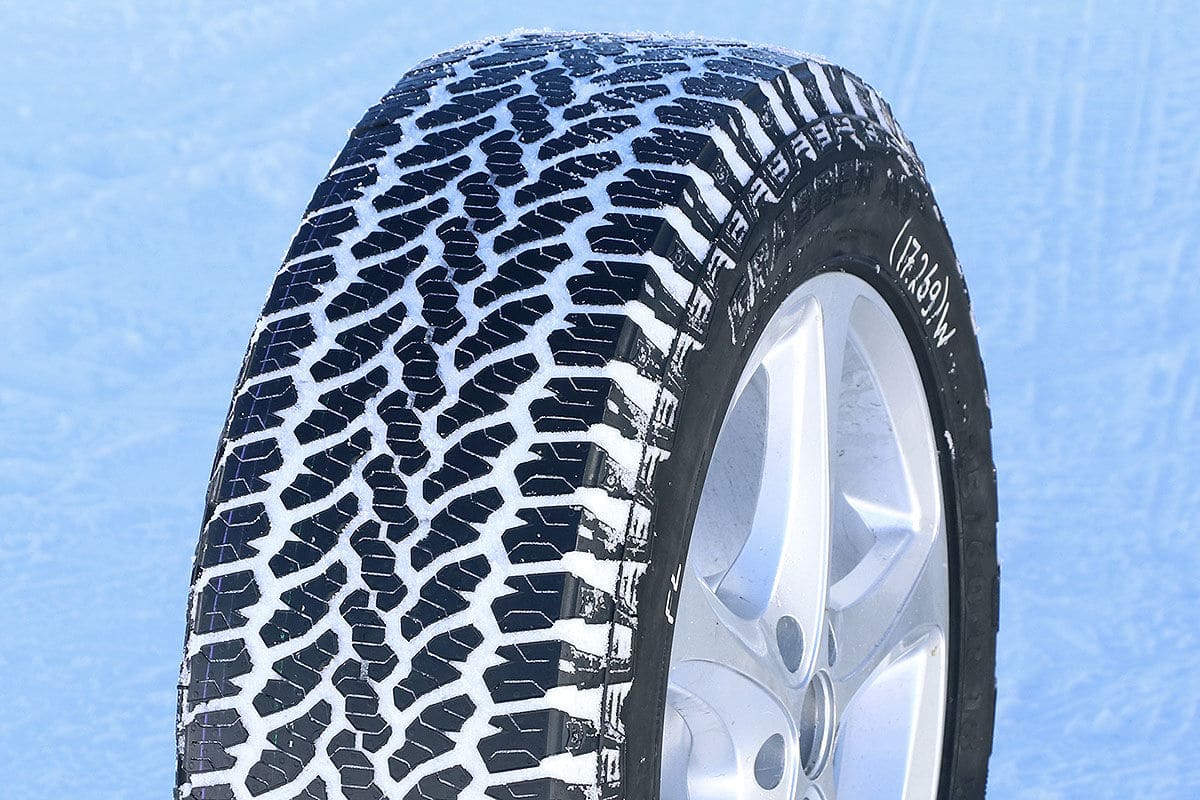
All season tyres may do the trick
For this test, AutoBild chose a selection of comparable mid-range/premium all season tyres. Only the Mastersteel All Weather was chosen to represent the “entry-level” brands. At €430 (approx. £390) for 4 tyres, the Chinese Manufacturer’s model undercuts all the competition. It surprised the testers by delivering the best traction on snow among the all season tyres and was almost as good as a winter tyre. It also delivered a good braking performance on snow (25.7 m) but its slalom and handling results on this surface were fairly average. In wet conditions, it was systematically at the bottom of the all season tyre ranking for each test and was only slightly better in dry conditions with a relatively long braking distance (43.4 m).
The Hankook Kinergy 4S performed well on snow, despite delivering slightly longer braking distances. In wet conditions, its results were average. It was the same story in dry conditions with performance which was neither better nor worse than the competition. On this surface, it took almost the same distance to stop as a winter tyre (42.8 m). For AutoBild testers, who underlined its particularly comfortable ride, it is a good tyre at the affordable price of €580 for four (approx £500), which is below that of its competitors.
With the second shortest braking distance in dry and wet conditions, the Vredestein Quatrac 5 also obtained the best results in dry and wet handling tests, coming first in the latter. Not quite as good on snow, it remains an excellent choice, especially at a price of €600 (approx. £530).
Although the Nokian Weatherproof SUV is slightly more expensive at €640 a set (approx. £560), it obtained the same overall score as the Vredestein tyre. Apart from the winter tyre, it delivered the best braking performance on snow (24.5 m). For wet braking performance, it was around the middle of the pack (70.8 m). It finished first equal in aquaplaning tests. On dry road surfaces, its braking distance was slightly shorter than the winter tyre.
At the top of the ranking, the Michelin CrossClimate SUV seemed to be a good tyre on all surfaces. It was excellent on dry roads where it obtained the best score (after the summer tyre) in handling, braking and rolling resistance tests. The Michelin all season tyre also had the shortest wet braking distance (49.2 m). It was not quite as good on snow, despite its good driving sensations on this surface, according to AutoBild.
The winner of this ‘special’ test was the Goodyear Vector 4Seasons SUV Gen-2. Its handling performance on snow was almost comparable with that of a winter tyre. The same was true in wet conditions where it could compete with the summer tyre and it was even better in handling tests. More like a winter tyre on dry roads, its braking distance was shorter on this surface (41.8 m).
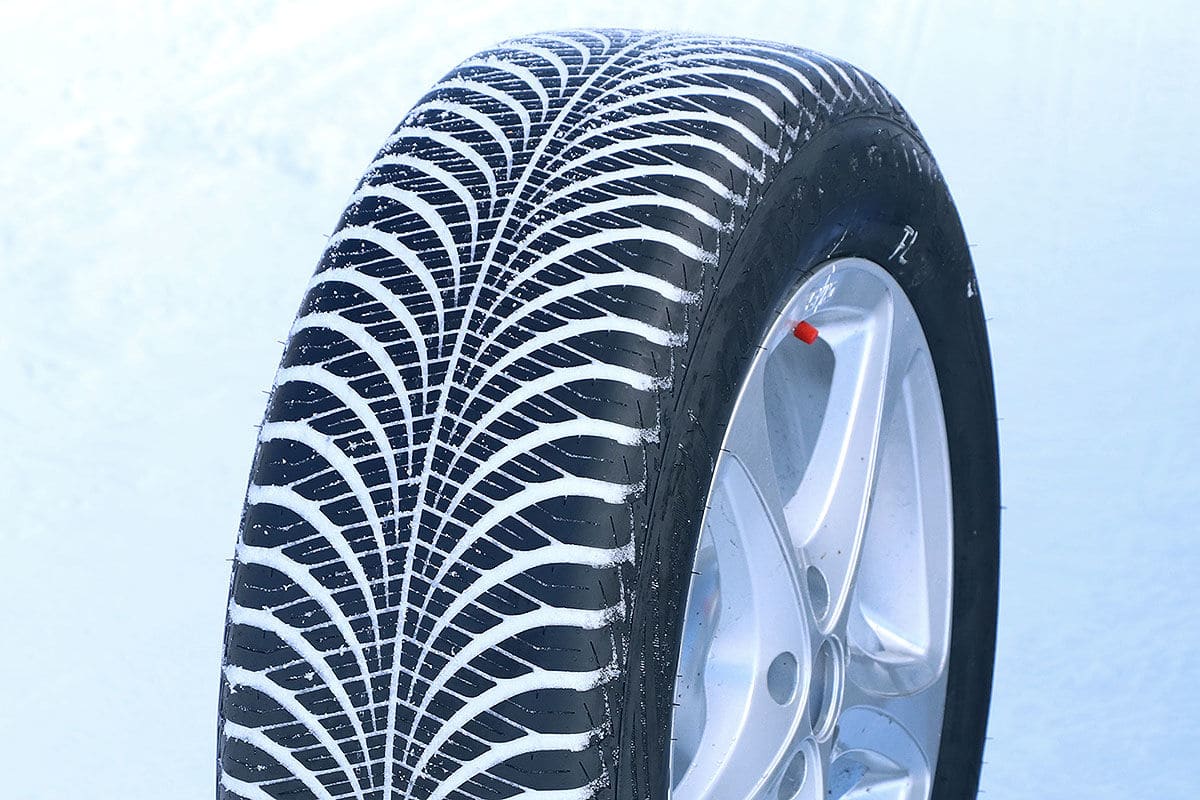
What tyre for my 4×4?
The purpose of the AutoBild test was to identify the tyre that best suits your vehicle, but above all, your use. Nothing will be more efficient that a summer tyre in summer and a winter tyre in winter. But an all season tyre can be a good compromise if you mainly drive in an urban environment where temperatures rarely drop below zero. This is why, in most European countries with a temperate climate, all season tyres are suitable for winter use thanks to the M+S and 3PMSF approval. However, these markings are not necessarily a guarantee of safety in winter but rather a guarantee of minimum winter performance.
| Tyres | Braking on snow | Dry braking | Wet braking |
| Goodyear Vector 4Seasons SUV Gen-2 (1) | 25.1 m (2) | 41.8 m (3) | 50.2 m (3) |
| Michelin CrossClimate SUV (2) | 27.8 m (6) | 38.3 m (1) | 49.2 m (1) |
| Nokian Weatherproof SUV (3) | 24.5 m (1) | 42.5 m (4) | 50.3 m (4) |
| Vredestein Quatrac 5 (3) | 26.2 m (4) | 40.7 m (2) | 49.7 m (2) |
| Hankook Kinergy 4S (5) | 27.7 m (5) | 42.8 m (5) | 52.6 m (5) |
| Mastersteel All Weather (6) | 25.7 m (3) | 43.4 m (6) | 54.3 m (6) |

